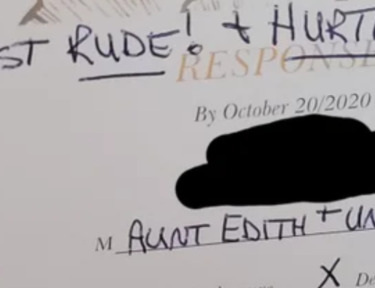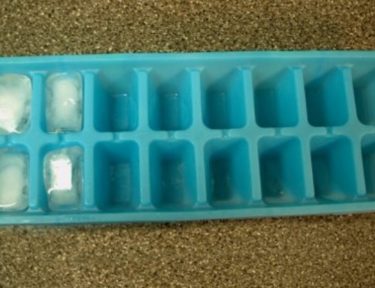If You Get Shingles, You’ll Be Glad You Know About These 7 Natural Remedies
Chicken pox, in our modern era, is often considered a childhood rite of passage, one that you can avoid with a vaccine and that, if you do become infected but receive proper medical treatment, rarely results in much more than the irritation of scratching. That consideration doesn’t remember, however, that the chicken pox virus – properly called varicella-zoster virus – can resurface as shingles later in life, and far from being a memorable rite of passage, it’s a painful, serious condition. Luckily, there are ways to relieve that pain, and a lot of them are simple, natural remedies you can easily do at home.
Before we start with the remedies, let’s be clear: You should always seek professional medical attention if you suspect you have shingles – or any illness – especially if you had chicken pox as a child. Got that? Now let’s be sure we understand what shingles is. According to the Mayo Clinic:
Shingles is a viral infection that causes a painful rash. Although shingles can occur anywhere on your body, it most often appears as a single stripe of blisters that wraps around either the left or the right side of your torso. Shingles is caused by the varicella-zoster virus — the same virus that causes chickenpox. After you’ve had chickenpox, the virus lies inactive in nerve tissue near your spinal cord and brain. Years later, the virus may reactivate as shingles. While it isn’t a life-threatening condition, shingles can be very painful. Vaccines can help reduce the risk of shingles, while early treatment can help shorten a shingles infection and lessen the chance of complications.
Those blisters and that pain is what we want to focus on today. After you visit your doctor, there are several ways you can augment your course of treatment and make shingles just a little less painful. Here are the seven best ones we’ve found so far!
- Reduce you stress levels.
We know, we know— it’s much easier to say “Relax!” than it is to actually do it, especially when you’re in the middle of an outbreak and really feeling the pain. However, reducing your stress and doing everything you can to remain calm and relaxed is one of the absolute best things you can do to alleviate shingles. Since experiencing increased stress and/or trauma can actually increase the probability of a shingles outbreak, trying to reduce that particular risk factor is one of the best things you can do to heal. Luckily, many of these other home remedies are pretty soothing all on their own, so just the process of trying them should be pretty helpful. For example, of of the best remedies you could try is to . . . - Take a cool bath.
Cool – but not too cold – water can be especially soothing for painful shingles blisters, so when your skin hurts too much to bear, try taking a cool bath. Soak for several minutes, until you feel better, then dry your skin completely. Keep in mind that, again, the water shouldn’t be too cold; if it is, your skin will react, and that may actually hurt more. Be sure to also wash any towels you use in hot water as soon as possible after using them to dry your skin; there’s a low, but not impossible, risk of spreading the virus via those towels. - Make your bath more healing.
If a cool bath doesn’t offer you enough relief, there’s another bathing option you can try: an oatmeal one! Yes, the go-to treatment for poison ivy and sunburn works for shingles, too. Add colloidal oatmeal to lukewarm – not hot – water and soak for a few minutes, then pat your skin completely dry. Starch baths can also be effective. - Apply cool compresses.
Sometimes you want cooling relief, but getting completely wet just isn’t an option. When that situation arises and you’re suffering with shingles, turn to cold compresses. All you need to do is soak a towel or cloth in cool water, wring it to remove excess water, and apply it to the painful areas. When it dries out and/or becomes warm, soak it again, and repeat until you feel a little better. Just be sure to wash the towels and cloths thoroughly in hot water when you’re done to avoid passing on the virus. - Rub on gentle lotions.
Don’t use just any lotion to soothe your shingles. Instead, take a page out of the treatment book for poison ivy and sunburn, and stick with gentle calamine lotion. Simply apply it to the affected areas and enjoy the relief. It’s also especially effective if you apply after a round of cold compresses. Just be sure to wash your hands thoroughly with soap and water afterward, and it’s probably best not to share. Consider keeping a designated bottle just for helping your shingles, to avoid cross-contamination with anybody else or even yourself after the rash and blisters have faded. Better safe than sorry, after all! You may also consider a cream that incorporates capsaicin, a pepper extract and traditional, natural pain reliever that can help dull the pain of shingles. - Keep your sores dry with baking soda or cornstarch . . .
While baths and cold compresses are helpful, it’s also important to keep your shingles sores dry to allow them to heal. That’s why it’s so vital you make sure to dry off completely after either of those treatments! If you’re having trouble with keeping them dry, you can always apply some baking soda or cornstarch to the sores to help along the process and even assist in faster healing. - . . . and try to leave them alone.
Sometimes, the most natural and helpful thing you can do is nothing at all. Oh, we’re not suggesting you ignore a shingles outbreak – far from it! – but after you’ve visited your doctor and tried the remedies here, the best thing you can do is leave. The rash. Alone. Don’t pick, don’t scratch, don’t touch. Remember the mittens we wore as kids when we got chicken pox? Imagine you have those back on your hands! If you leave the sores alone, they’ll naturally crust over and fall off on their own. Scratching them just prolongs the process and your pain— and who in the world wants to do that?
Shingles is absolutely no joke, so we should all be sharing our remedies and solutions to help each other escape the pain. Are there any we missed that you recommend? Have you ever tried any of the methods here? To learn more about shingles and home remedies for it, visit Health Line, the Mayo Clinic and WebMD, and as always, consult your doctor for your best treatment plan and correct diagnoses.




